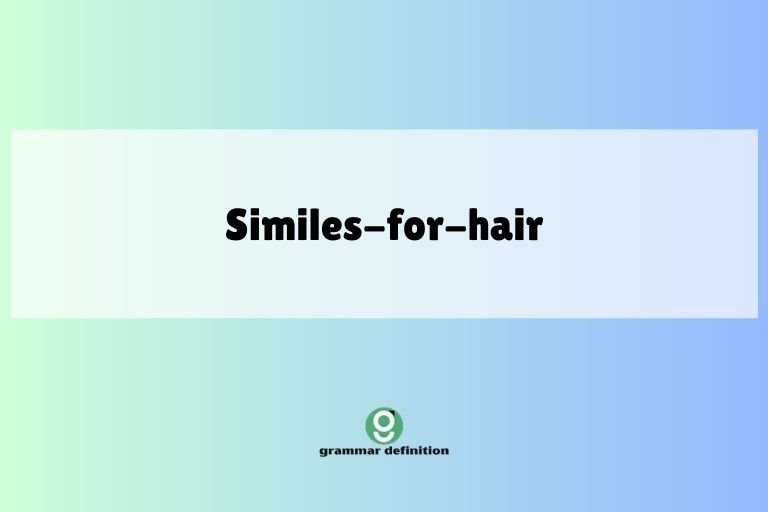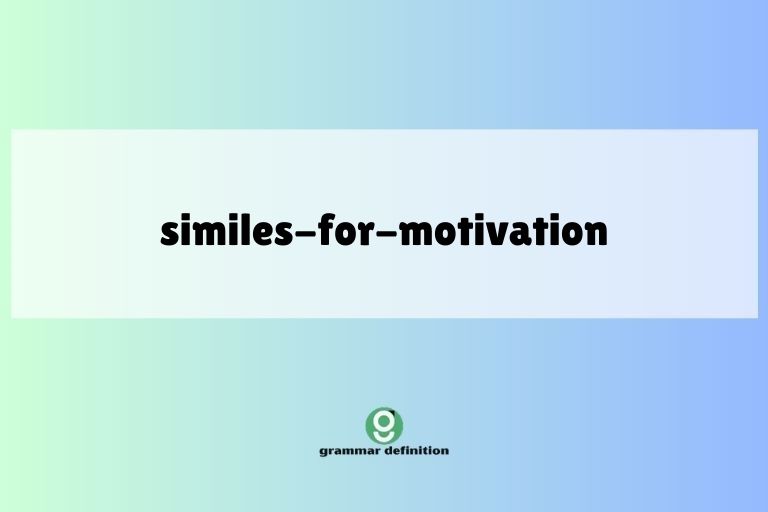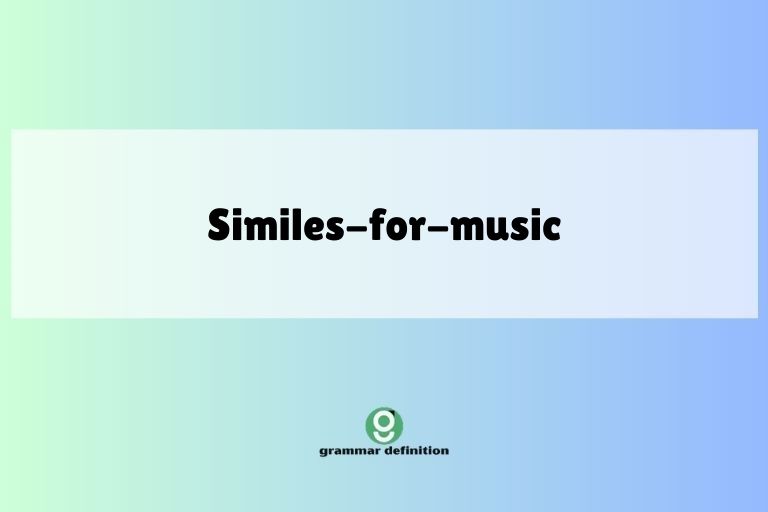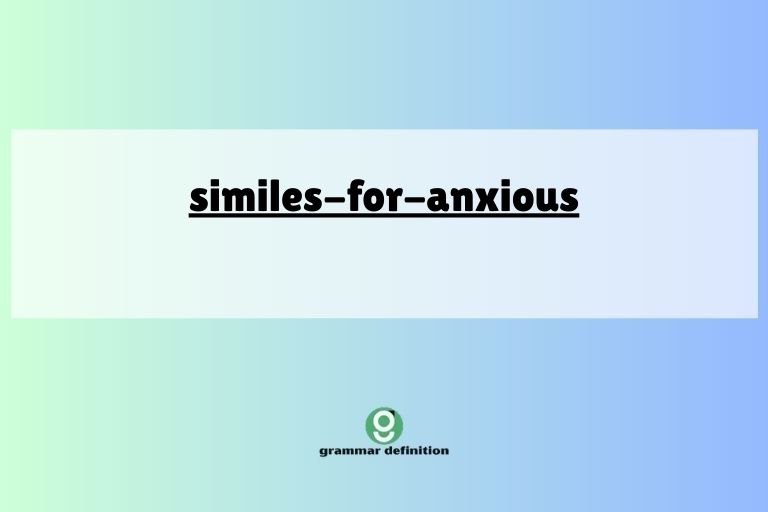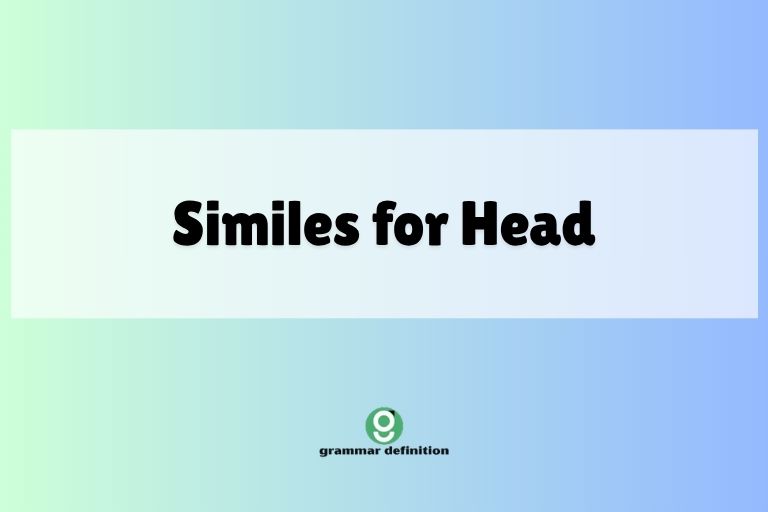Similes for Pretty: Enhancing Descriptions in English
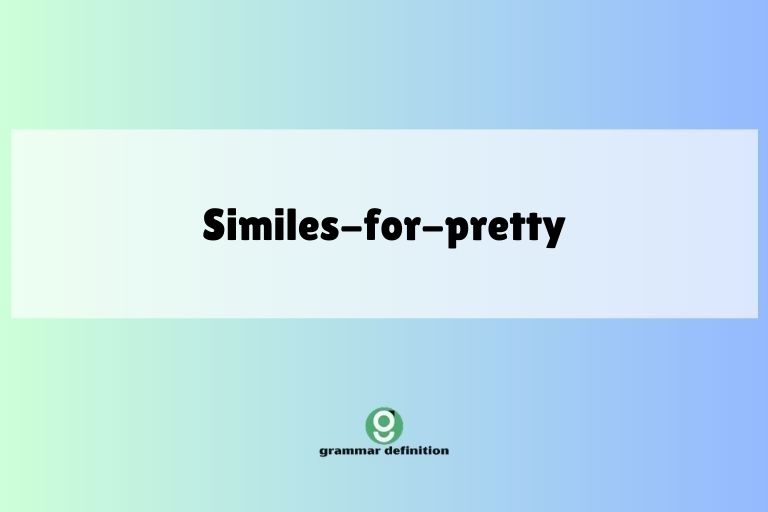
Understanding and using similes effectively is crucial for enriching your descriptive writing and adding depth to your communication. Similes allow you to paint vivid pictures with words by drawing comparisons between seemingly unrelated things.
When describing beauty, similes can elevate your language from the mundane to the memorable. This article provides a comprehensive guide to using similes for “pretty,” covering definitions, structures, examples, usage rules, common mistakes, and practice exercises.
Whether you’re a student, writer, or language enthusiast, this guide will help you master the art of crafting compelling descriptions using similes.
Table of Contents
- Introduction
- Definition of Simile
- Structural Breakdown of Similes
- Types of Similes
- Examples of Similes for Pretty
- Usage Rules for Similes
- Common Mistakes with Similes
- Practice Exercises
- Advanced Topics in Similes
- Frequently Asked Questions
- Conclusion
Introduction
Similes are powerful tools in the English language that allow writers and speakers to create more vivid and engaging descriptions. By comparing something to something else using words like “like” or “as,” similes help to paint a picture in the reader’s or listener’s mind.
Describing something as “pretty” can be enhanced significantly by using similes that evoke specific images and emotions. This article explores the various ways similes can be used to describe beauty, providing numerous examples and practical exercises to improve your understanding and usage.
Whether you are a budding writer looking to add flair to your prose, an English language learner aiming to refine your descriptive skills, or simply someone who appreciates the beauty of language, this guide will provide you with the knowledge and tools necessary to effectively use similes for describing “pretty.” We will delve into the definition of similes, their structural components, different types, common mistakes, and advanced techniques, all designed to elevate your descriptive writing.
Definition of Simile
A simile is a figure of speech that compares two unlike things using the words “like” or “as.” Its primary function is to create a vivid image or enhance understanding by drawing a parallel between the qualities of two distinct entities. Similes are commonly used in literature, poetry, and everyday conversation to make descriptions more engaging and memorable.
Similes belong to the broader category of figurative language, which also includes metaphors, personification, and hyperbole. Unlike metaphors, which directly equate two things (e.g., “She is a rose”), similes acknowledge the comparison explicitly (e.g., “She is *like* a rose”).
This distinction makes similes a more direct and often easier-to-understand form of figurative language. The effectiveness of a simile lies in the aptness and originality of the comparison, which can evoke specific emotions and sensory experiences.
In the context of describing beauty, similes can be particularly effective. Instead of simply stating that someone or something is “pretty,” a simile can provide a more nuanced and evocative description.
For example, saying “She is as pretty as a summer’s day” not only conveys beauty but also conjures images of warmth, light, and pleasantness associated with summer. The use of similes therefore allows for a richer and more imaginative expression of beauty.
Structural Breakdown of Similes
The basic structure of a simile consists of three main components: the subject, the linking word, and the comparative element. Understanding these components is crucial for constructing effective and grammatically correct similes. Let’s break down each component in detail:
Subject
The subject is the person, object, or concept being described. It is the entity whose qualities are being compared to something else.
The subject is usually a noun or pronoun and forms the foundation of the simile.
Example: In the simile “She is as pretty as a picture,” “She” is the subject.
Linking Word
The linking word is the term that explicitly indicates a comparison is being made. The most common linking words are “like” and “as.” These words connect the subject to the comparative element, signaling that the subject shares a certain quality with the element being compared to.
Example: In the simile “She is as pretty as a picture,” “as” is the linking word.
Comparative Element
The comparative element is the person, object, or concept to which the subject is being compared. It serves as a reference point for understanding the qualities of the subject.
The comparative element should share a relevant characteristic with the subject, making the comparison logical and meaningful.
Example: In the simile “She is as pretty as a picture,” “a picture” is the comparative element.
By understanding these three components, you can effectively construct similes that clearly and vividly convey your intended meaning. The key is to choose a comparative element that is both relevant and evocative, enhancing the description of the subject.
Types of Similes
Similes can be categorized based on the type of comparison they make and the effect they create. Here are some common types of similes:
Descriptive Similes
These similes focus on describing physical attributes or characteristics. They aim to create a visual or sensory image in the reader’s mind by comparing the subject to something that shares similar qualities.
Example: “Her skin was as smooth as silk.” (describes the texture of her skin)
Emotional Similes
Emotional similes compare the subject’s feelings or emotional state to something that evokes a similar emotion. They help to convey the intensity or nature of the subject’s emotions.
Example: “She looked as happy as a clam.” (describes her state of happiness)
Exaggerated Similes
These similes use hyperbole to emphasize a particular quality or characteristic. They often involve comparisons that are intentionally exaggerated for dramatic effect.
Example: “She was as pretty as an angel.” (exaggerates her beauty)
Understated Similes
Understated similes, also known as litotes, use understatement to highlight a quality by comparing it to something that is significantly less extreme. They create a subtle and often ironic effect.
Example: “She’s not as pretty as a supermodel.” (understates her beauty, implying she is still quite attractive)
Original Similes
These similes involve unique and creative comparisons that are not commonly used. They demonstrate the writer’s or speaker’s ability to think outside the box and create fresh, engaging descriptions.
Example: “Her smile was as pretty as a newly discovered constellation.” (a unique and imaginative comparison)
By understanding these different types of similes, you can choose the most appropriate type for your specific purpose and create descriptions that are both effective and engaging. The key is to consider the desired effect and choose a comparison that aligns with your overall goal.
Examples of Similes for Pretty
The following tables provide a wide range of examples of similes used to describe “pretty” in various contexts. These examples are categorized to help you understand the different ways similes can be used to enhance descriptions of beauty.
Similes Comparing Beauty to Nature
These similes draw comparisons between beauty and elements of nature, such as flowers, landscapes, and celestial bodies. They often evoke feelings of freshness, purity, and serenity.
| Simile | Explanation |
|---|---|
| She is as pretty as a flower in bloom. | Compares her beauty to the vibrant and fresh appearance of a blooming flower. |
| She is as pretty as a summer’s day. | Associates her beauty with the warmth, light, and pleasantness of summer. |
| She is as pretty as a sunrise over the ocean. | Compares her beauty to the breathtaking and awe-inspiring sight of a sunrise. |
| She is as pretty as a field of wildflowers. | Evokes a sense of natural beauty and colorful vibrancy. |
| She is as pretty as a clear mountain stream. | Associates her beauty with purity, clarity, and freshness. |
| She is as pretty as a freshly bloomed rose. | Compares her elegance and charm to the iconic beauty of a rose. |
| She is as pretty as a serene lake at dawn. | Evokes a sense of peace and tranquility. |
| She is as pretty as a starlit night. | Compares her beauty to the captivating and magical atmosphere of a night sky filled with stars. |
| She is as pretty as a rainbow after the rain. | Associates her beauty with hope, joy, and the promise of something beautiful after a storm. |
| She is as pretty as a snow-covered landscape. | Compares her beauty to the pristine and serene appearance of a winter wonderland. |
| She is as pretty as a cherry blossom in spring. | Associates her beauty with the delicate and ephemeral beauty of cherry blossoms. |
| She is as pretty as a sunset over the mountains. | Evokes a sense of awe and wonder. |
| She is as pretty as a lush green meadow. | Compares her beauty to the vibrant and refreshing appearance of a meadow. |
| She is as pretty as a sparkling waterfall. | Associates her beauty with energy and vitality. |
| She is as pretty as a moonlit garden. | Compares her beauty to the enchanting and romantic atmosphere of a garden bathed in moonlight. |
| She is as pretty as a dew-kissed spiderweb. | Evokes a sense of delicate beauty and intricate detail. |
| She is as pretty as a forest in autumn. | Associates her beauty with the rich colors and textures of fall foliage. |
| She is as pretty as a blooming lotus flower. | Compares her beauty to the purity and grace of a lotus flower. |
| She is as pretty as a coral reef. | Associates her beauty with vibrancy and diversity. |
| She is as pretty as a hummingbird in flight. | Compares her beauty to the delicate and swift movements of a hummingbird. |
Similes Comparing Beauty to Art and Objects
These similes compare beauty to works of art or aesthetically pleasing objects. They often emphasize qualities such as elegance, grace, and perfection.
| Simile | Explanation |
|---|---|
| She is as pretty as a picture. | A classic simile that compares her beauty to the visual appeal of a well-composed image. |
| She is as pretty as a porcelain doll. | Associates her beauty with delicate features and flawless skin. |
| She is as pretty as a priceless jewel. | Compares her beauty to the rarity and value of a precious gem. |
| She is as pretty as a work of art. | Elevates her beauty to the level of artistic creation. |
| She is as pretty as a perfectly cut diamond. | Associates her beauty with precision, clarity, and brilliance. |
| She is as pretty as a melody. | Compares her beauty to the pleasing and harmonious qualities of music. |
| She is as pretty as a pristine pearl. | Evokes a sense of purity and elegance. |
| She is as pretty as a Renaissance painting. | Associates her beauty with the classical ideals of beauty from the Renaissance period. |
| She is as pretty as a handcrafted sculpture. | Compares her beauty to the skill and artistry involved in creating a sculpture. |
| She is as pretty as a vintage lace dress. | Associates her beauty with timeless elegance and intricate detail. |
| She is as pretty as a well-composed photograph. | Compares her beauty to the aesthetic balance and visual appeal of a photograph. |
| She is as pretty as a delicate music box. | Evokes a sense of fragility and charm. |
| She is as pretty as a polished mirror. | Associates her beauty with reflection and clarity. |
| She is as pretty as a string of fairy lights. | Compares her beauty to the enchanting and magical glow of fairy lights. |
| She is as pretty as a carefully curated bouquet. | Associates her beauty with the thoughtful arrangement of elements to create a harmonious whole. |
| She is as pretty as a stained-glass window. | Evokes a sense of color and intricate design. |
| She is as pretty as a perfectly bound book. | Associates her beauty with the elegance and craftsmanship of a well-made book. |
| She is as pretty as a piece of fine jewelry. | Compares her beauty to the exquisite detail and precious materials of fine jewelry. |
| She is as pretty as a hand-painted teacup. | Associates her beauty with delicate artistry and refinement. |
| She is as pretty as a well-maintained antique. | Compares her beauty to the timeless appeal and preserved quality of an antique. |
Similes Comparing Beauty to Abstract Concepts
These similes compare beauty to abstract concepts such as light, music, and emotions. They often convey a deeper sense of inner beauty and radiance.
| Simile | Explanation |
|---|---|
| She is as pretty as a ray of sunshine. | Compares her beauty to the warmth, brightness, and positivity of sunlight. |
| She is as pretty as a sweet melody. | Associates her beauty with the pleasing and harmonious qualities of music. |
| She is as pretty as a genuine smile. | Compares her beauty to the authenticity and warmth of a heartfelt smile. |
| She is as pretty as a moment of pure joy. | Elevates her beauty to the level of a profound and uplifting experience. |
| She is as pretty as a beacon of hope. | Associates her beauty with inspiration and optimism. |
| She is as pretty as a silent prayer. | Compares her beauty to the reverence and serenity of a prayer. |
| She is as pretty as a gentle breeze. | Evokes a sense of lightness and refreshment. |
| She is as pretty as a whispered secret. | Associates her beauty with intimacy and allure. |
| She is as pretty as a burst of laughter. | Compares her beauty to the spontaneity and joy of laughter. |
| She is as pretty as a dream come true. | Elevates her beauty to the level of fulfillment and happiness. |
| She is as pretty as a feeling of contentment. | Compares her beauty to the peace and satisfaction of contentment. |
| She is as pretty as a spark of inspiration. | Associates her beauty with creativity and innovation. |
| She is as pretty as a gesture of kindness. | Compares her beauty to the warmth and compassion of a kind act. |
| She is as pretty as a moment of clarity. | Associates her beauty with understanding and insight. |
| She is as pretty as a promise of tomorrow. | Compares her beauty to the hope and potential of the future. |
| She is as pretty as a song in your heart. | Evokes a sense of joy and inner harmony. |
| She is as pretty as a drop of morning dew. | Associates her beauty with freshness and purity. |
| She is as pretty as a feeling of nostalgia. | Compares her beauty to the bittersweet longing for the past. |
| She is as pretty as a moment of reflection. | Associates her beauty with introspection and thoughtfulness. |
| She is as pretty as a silent understanding. | Compares her beauty to the deep connection and empathy between two people. |
Usage Rules for Similes
Using similes effectively requires adherence to certain grammatical and stylistic rules. These rules ensure that your similes are clear, meaningful, and impactful.
Here are some key usage rules to keep in mind:
Use “Like” or “As” Correctly
The most fundamental rule is to use the words “like” or “as” to introduce the comparison. “Like” is used to compare nouns or pronouns, while “as” is used to compare clauses or phrases.
Correct: “She is as pretty as a picture.”
Correct: “She dances like a graceful swan.”
Incorrect: “She is pretty a picture.”
Ensure Logical Comparison
The comparison should be logical and make sense. The subject and the comparative element should share a relevant characteristic that justifies the comparison.
Avoid comparisons that are nonsensical or confusing.
Correct: “Her eyes are as blue as the ocean.” (both share the quality of blueness)
Incorrect: “Her eyes are as blue as a banana.” (no logical connection)
Maintain Consistency
Ensure that the tense and number of the subject and comparative element are consistent. This helps to maintain grammatical correctness and clarity.
Correct: “She is as pretty as her mother was.” (both in the past tense)
Incorrect: “She is as pretty as her mother were.”
Avoid Clichés
While some similes are commonly used, overuse can render them clichéd and ineffective. Strive to create original and fresh comparisons that will capture the reader’s attention.
Cliché: “She is as pretty as a rose.”
Original: “She is as pretty as a newly discovered constellation.”
Consider Context
The appropriateness of a simile depends on the context in which it is used. Consider the tone, audience, and purpose of your writing or speech when choosing a simile.
A simile that is effective in one context may be inappropriate in another.
Common Mistakes with Similes
Even experienced writers sometimes make mistakes when using similes. Being aware of these common errors can help you avoid them and improve the clarity and effectiveness of your writing.
Confusing Similes with Metaphors
One of the most common mistakes is confusing similes with metaphors. Remember that similes use “like” or “as” to make a comparison, while metaphors directly equate two things without using these words.
Simile: “She is as pretty as a flower.”
Metaphor: “She is a flower.”
Using Illogical Comparisons
An illogical comparison occurs when there is no clear or reasonable connection between the subject and the comparative element. This can result in a simile that is confusing or nonsensical.
Incorrect: “Her hair is as soft as a brick.”
Correct: “Her hair is as soft as silk.”
Overusing Common Similes
While some common similes are effective, overuse can make your writing seem unoriginal and clichéd. Strive to create fresh and unique comparisons that will capture the reader’s attention.
Overused: “She is as pretty as a rose.”
Original: “She is as pretty as a sunrise over the mountains.”
Misusing “Like” and “As”
Using “like” and “as” incorrectly can lead to grammatical errors. “Like” is used to compare nouns or pronouns, while “as” is used to compare clauses or phrases.
Incorrect: “She sings as a bird.”
Correct: “She sings like a bird.”
Correct: “She sings as a bird sings.”
Creating Inconsistent Similes
Inconsistency in tense or number can lead to grammatical errors and confusion. Ensure that the subject and comparative element are consistent in tense and number.
Incorrect: “She is as pretty as her mother were.”
Correct: “She is as pretty as her mother was.”
Practice Exercises
Test your understanding of similes with these practice exercises. Each exercise includes multiple questions designed to reinforce your knowledge of simile construction and usage.
Answers are provided at the end of each exercise.
Exercise 1: Identifying Similes
Identify the similes in the following sentences.
| Question | Answer |
|---|---|
| 1. Her smile was as bright as the sun. | as bright as the sun |
| 2. The moon is a silver coin in the sky. | (This is a metaphor, not a simile) |
| 3. He runs like the wind. | like the wind |
| 4. Her eyes are blue pools. | (This is a metaphor, not a simile) |
| 5. The snow fell as softly as feathers. | as softly as feathers |
| 6. She is as graceful as a swan. | as graceful as a swan |
| 7. The city is a jungle. | (This is a metaphor, not a simile) |
| 8. His anger was like a raging fire. | like a raging fire |
| 9. The stars are diamonds scattered across the sky. | (This is a metaphor, not a simile) |
| 10. Time flies like an arrow. | like an arrow |
Exercise 2: Completing Similes
Complete the following similes with an appropriate comparative element.
| Question | Answer |
|---|---|
| 1. She is as pretty as a _____. | flower in bloom |
| 2. His voice was as smooth as _____. | silk |
| 3. The night was as dark as _____. | ink |
| 4. He is as strong as _____. | an ox |
| 5. Her laughter was like _____. | music |
| 6. The cake was as light as _____. | air |
| 7. The water was as clear as _____. | glass |
| 8. The room was as quiet as _____. | a tomb |
| 9. The pain was like _____. | a knife |
| 10. The sky was as blue as _____. | sapphire |
Exercise 3: Writing Similes
Write your own similes to describe the following subjects.
| Subject | Example Simile |
|---|---|
| 1. A beautiful sunset | The sunset was as colorful as a painter’s palette. |
| 2. A calm lake | The lake was as still as a mirror. |
| 3. A gentle breeze | The breeze was as soft as a whisper. |
| 4. A starry night | The night sky was as full of stars as a diamond mine. |
| 5. A field of flowers | The field of flowers was as vibrant as a rainbow. |
| 6. A flowing river | The river flowed as smoothly as liquid silver. |
| 7. A dense forest | The forest was as dark as a cavern. |
| 8. A snowy mountain | The mountain was as white as a cloud. |
| 9. A sandy beach | The beach was as warm as a summer’s embrace. |
| 10. A peaceful garden | The garden was as tranquil as a sanctuary. |
Advanced Topics in Similes
For advanced learners, exploring more complex aspects of similes can further enhance their understanding and usage. Here are some advanced topics to consider:
Extended Similes
An extended simile is a simile that is developed over several lines or sentences. It provides a more detailed and nuanced comparison, allowing for a richer and more evocative description.
Example: “Her beauty was like a rare flower, blooming in a hidden garden, its petals unfurling slowly, revealing layers of exquisite color and delicate fragrance, captivating all who were fortunate enough to behold it.”
Implied Similes
An implied simile is a simile that does not explicitly use the words “like” or “as.” Instead, the comparison is suggested through the use of descriptive language and imagery.
Example: “She moved with the grace of a dancer, her steps light and fluid, her body swaying in perfect rhythm.” (Implies a comparison to a dancer without using “like” or “as”)
Juxtaposition in Similes
Juxtaposition involves placing two contrasting elements side by side to create a striking effect. Using juxtaposition in similes can highlight the unique qualities of the subject and create a more memorable comparison.
Example: “Her beauty was like a fragile butterfly, fluttering amidst a field of thorns.” (Contrasts the delicate beauty of the butterfly with the harshness of the thorns)
Similes in Different Genres
The use of similes can vary depending on the genre of writing. In poetry, similes are often used to create vivid imagery and evoke emotions.
In prose, similes can add depth and nuance to descriptions. In persuasive writing, similes can be used to make arguments more compelling.
Frequently Asked Questions
Here are some frequently asked questions about similes, along with detailed answers to help clarify any confusion.
What is the difference between a simile and a metaphor?
A simile compares two unlike things using “like” or “as,” while a metaphor directly equates them without using these words. Similes are more explicit, while metaphors are more implicit.
Simile: “She is as pretty as a flower.”
Metaphor: “She is a flower.”
How can I avoid using clichés in my similes?
To avoid clichés, strive to create original and fresh comparisons. Think outside the box and consider the unique qualities of the subject you are describing.
Use vivid language and imagery to create a more memorable and impactful simile.
Can a simile be too long?
Yes, a simile can be too long if it becomes overly verbose or detracts from the overall flow of the writing. An extended simile can be effective if used sparingly and with purpose, but it should not become a distraction.
What is the purpose of using similes in writing?
Similes are used to create vivid imagery, enhance understanding, and add depth and nuance to descriptions. They can make writing more engaging, memorable, and impactful by drawing comparisons between seemingly unrelated things.
How do I choose the right comparative element for a simile?
Choose a comparative element that shares a relevant characteristic with the subject and that evokes the desired emotion or sensory experience. Consider the context, tone, and purpose of your writing when making your selection.
Are similes only used in literature?
No, similes are not only used in literature. They are also commonly used in everyday conversation, speeches, and other forms of communication to make descriptions more vivid and engaging.
Is it okay to use multiple similes in one paragraph?
While it is possible to use multiple similes in one paragraph, it is important to do so judiciously. Overuse of similes can make your writing seem cluttered and distracting.
Use them sparingly and with purpose to achieve the desired effect.
How important is it to understand the subject when creating similes?
Understanding the subject deeply is crucial for creating effective similes. A thorough understanding allows you to identify key characteristics and find appropriate and meaningful comparisons.
Without this understanding, the similes may lack depth and relevance.
Conclusion
Mastering the use of similes, particularly when describing “pretty,” can significantly enhance your writing and communication skills. By understanding the definition, structural components, types, and usage rules of similes, you can craft more vivid and engaging descriptions.
Remember to avoid common mistakes, such as confusing similes with metaphors or overusing clichés. Practice regularly with exercises and explore advanced topics to further refine your skills.
The key to effective simile usage lies in creativity, logical comparisons, and a deep understanding of the subject matter. By continually practicing and experimenting with different types of similes, you can develop your own unique style and create descriptions that are both memorable and impactful.
Whether you are a student, writer, or language enthusiast, mastering the art of similes will undoubtedly elevate your ability to express beauty and enhance your overall communication skills.

